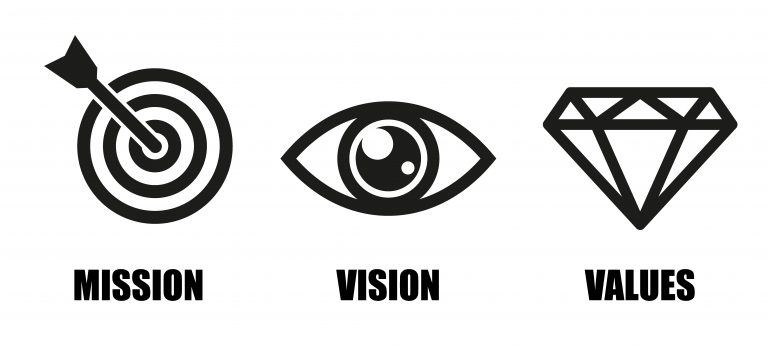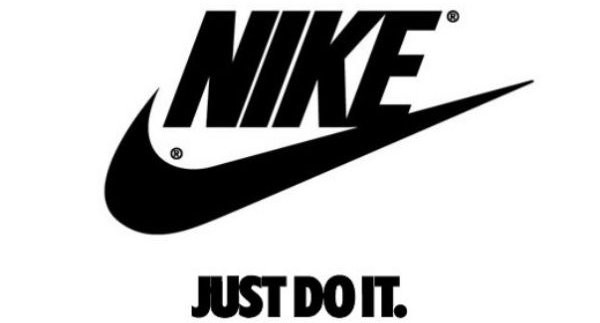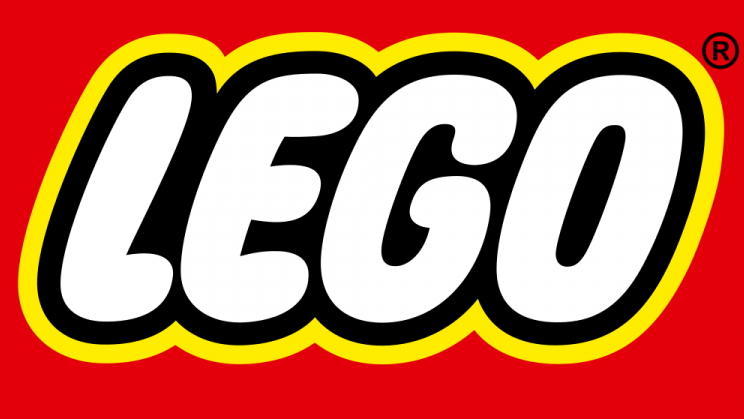Building a Powerful Brand Identity
Just as your identity distinguishes you from other people, a strong brand identity distinguishes your company from the competition. Brand identity is all about visual aspects, such as your logo, as well as your brand personality and message. A well-presented brand identity represents a company's values and goals - if you create an online catalog, you showcase your brand identity via its design, layout, and typography. Developing a distinctive brand voice not only lets people know who you are but also differentiates your company from competitors. Of course, your brand identity can evolve - you change your logo or sometimes even your name, just as Twitter changed to X.

If building a brand identity for yourself or a client seems difficult, don't worry - we've got you covered! This simple step-by-step guide includes expert tips and useful tools to help you throughout the process. In this article, we'll explain what is brand identity, how to create a brand identity and what are the crucial elements of designing your brand assets.
What is a brand identity and why does it matter?
Brand identity is the collection of all elements that a company uses to present itself to its audience. It includes visual components like logos and color schemes but also the tone of voice, message, and overall aesthetic. It's crucial because it helps you stand out from competitors, and fosters a connection with your audience, influencing perception and increasing loyalty.
Essentially, brand identity refers to the set of visual and non-visual elements that identify and distinguish a company from others in its industry. It can also involve non-physical aspects of a brand's identity: employment behavior, dress code, certain procedures, and actions. For instance, the American fast-food chain Chick-fil-A is known for being closed down on Sundays or Christian holidays. This is a part of their brand personality and helps them find the target audience.

The importance of a successful brand identity cannot be underestimated. First, it creates a memorable impression, helping potential customers quickly and easily distinguish your company from others. Second, it builds the credibility of your business by demonstrating your company's values and mission. For example, if your brand is meant to target young people, it should be driven by adventure and excitement - and if it's aimed at people who have families, brand identity should focus on stability. Third, brand identity facilitates communication between the brand and its target audience, ensuring consistency across different touchpoints, both online and offline. For instance, both online stores of KFC and their physical restaurants use the same brand identity design - similar color palettes, fonts, and logos.

Through these designs, brand identity influences consumer behavior, preferences, and perceptions, ultimately driving sales and revenue growth. Therefore, most marketing strategies should try to focus on creating a memorable brand identity if your business's identity is already established.
If you want to learn more about what is branding, check out our Knowledge Base. We have a collection of text on creating a brand identity, establishing brand guidelines, and style sheets for both small and larger companies.
Key elements of a strong brand identity
We have prepared more tips for marketing specialists and our flipbook products can help you create online catalogs and other brochures that maintain consistent brand identity design.
Logo design
Logo design is one of the key elements of creating a strong brand identity. A visually appealing and unique logo makes it easier for consumers to remember and identify a brand - for example, everyone knows the iconic McDonald's golden arches. Brand identities should involve a great-quality logo!
A logo should be customizable so that it looks great regardless of size or context. That's why it's a good idea to create logos using curves and vectors, without details, so that they are versatile and your graphic designer will be able to adapt them to various purposes. Thanks to modern technologies, you can even create a logo with AI yourself without any graphic knowledge. Simple elements are also easy to remember, so they are perfect for a memorable brand identity.
A good logo is one that accurately conveys the nature of your products/services and presents your overall offering - for example, in the FedEx logo, an arrow is visible, depicting transportation. Brand identity design involving logos can set your company apart from the competition, increasing its perceived value and professionalism. That's why it's a good idea to integrate it into your overall branding in terms of color or simplicity.

Color palette
Colors have a great power when it comes to shaping brand identity. First and foremost, the color must match the brand. We all know that colors evoke different emotions and moods in people. For example, we associate red with energy and is very visible, while blue is very calm and passive.
A careful selection of colors can set a brand apart from the competition. A well-chosen color can influence customer confidence - for example, medical companies choose colors like turquoise, blue, or green. Rarely will you see orange or yellow in medical companies' materials - because customers don't expect this as part of their brand identity design.
It's also worth remembering that brand color is only part of the overall color palette. When creating your brand style guide, you need to ensure integration across all touchpoints, including digital media, printed materials, packaging, and merchandise. For example, bright white colors are the hallmark of the modern Apple brand, integrating their designs of iPhones and Macs. The consistent color of your brand's visual identity promotes brand consistency and recognition, resulting in a positive customer experience.

Typography
Typography helps convey a brand's tone or character. For example, serif fonts are more traditional - and sans serif fonts are associated with the Web. As a result, most brand guidelines recommend that tech companies should choose more modern fonts. Selecting font styles according to the brand message and audience preferences ensures consistency and reliability.
Clear and legible text improves user experience and accessibility for all people, regardless of their age, ability, and language skills. Typography is not just font selection: the use of proper spacing, kerning, and alignment ensures maximum clarity and ease of understanding. Proper design of your text can help you create a great brand identity.
The font should also be easy to understand - suitable for a variety of uses, such as the Internet, mobile devices, print, and packaging. By maintaining readability, you reach as many customers as possible. When you have created a brand identity that can be recognizable with a glance, this is a marketing success!
Consistent use of particular typography in all marketing materials strengthens brand recognition and memory. Certain fonts are well associated with a particular brand - for example, the written Coca-Cola logo or the use of Calibri as the default font in MS Word. These fonts can be a crucial element of a strong brand strategy.

Typography and similar brand guidelines are a crucial part of your brand strategy when you're preparing an interactive catalog with Publuu. Our flipbooks let you create a brand identity that will reflect your values. Publish them online to show the consistency of your online materials and brand experience.
Branding materials
Brand materials are mainly physical items associated with a company, such as type of paper, signage, product labels, packaging, apparel, and promotional gadgets. These elements are also very important for branding and brand identity design - and they belong to your brand style guide!
By carefully selecting brand materials, companies effectively communicate their core principles and story. The iconic shape of the Coca-Cola bottle is a good example - whether it's plastic or glass, people recognize it at first sight. Customers associate these features with the organization, which enhances its reputation and allows you to turn a typical customer into a devoted follower.
Standardized brand materials provide continuity across all channels, consistently reinforcing the brand's personality and identity. It also builds trust among customers.
Successfully executed brand materials have a multiplier effect beyond mere commercial value. Packaging can be reused - for example, a sturdy canvas bag with a store logo will be seen many times as the customer runs errands around town. This not only builds the company's image as environmentally friendly but helps you intrigue onlookers with your visual brand values!
Another good example is uniformed attire. Not only does it make it easier for customers to recognize employees, but it builds group identity. Branding is also very important for your employees and subcontractors - it motivates them to work and makes them feel part of a bigger whole.... and a free T-shirt with the company logo makes a nice gift.
Creating a brand identity
Define your mission
Start by formulating a clear and concise statement outlining your company's purpose. Your mission statement represents the reason why your organization exists beyond making a profit. Do you provide solutions to people, care about the environment, or promote new technologies? Base your brand story on this idea!
Identify your values
What principles guide your business? Identify the beliefs and ideals that drive your business. What makes your products or services unique? What kind of customer experience do you want to provide? If you describe this, you know which direction you are headed. For example, if you produce kitchen equipment, think about whether your target audience is amateurs or professional chefs.
Choose your visual elements
Choose colors, fonts, graphics, shapes, patterns, and other visual representations that best reflect your brand identity. You need to consider your mission and culture and think about who you are targeting. As we wrote, vibrant colors attract attention.
Implement across all platforms
From your website to your letterhead, brochures, billboards, social media handles, in-store displays, email templates, product labels, and staff attire, make sure there are no inconsistencies or discrepancies in your visual representation.
Brand identity vs. brand image
Brand identity refers to the internal perception of a company about its values, attributes, and characteristics. Simply put, it's what you can shape in your company - brand identity includes typography, colors, logos, and the like. As a mark overseer, those are the aspects you can easily control and shift.
Brand image, on the other hand, refers to the perceptions formed by customers when they interact with a brand. It includes how people feel, think, and behave when they encounter a brand and shapes their emotional connection with the brand's products.
The relationship between brand identity and brand image is cyclical, as your brand vision influences how customers perceive the brand, which over time shapes brand identity. As a result, managing and balancing both aspects becomes essential to brand success.
Examples of effective brand identity
A well-defined brand identity is not just a consistent marketing campaign - many companies worked for years to build a brand identity of their own. As a result, some of the world's largest corporations are iconic and easily recognizable. A good brand shows these core elements and builds on them to address its target customers.
Nike
Nike's iconic swoosh logo is very recognizable, as is their emphasis on athleticism and excellence. This brand uses both vivid colors and neutral hues to promote its athletic wear. Simple slogans like 'Just Do It' help the potential customer discern the brand from its competition and represent their attitude toward personal empowerment.

Apple
Apple's brand identity centers around simplicity, minimalism, sophistication, and innovation. Its clean design language, sleek product aesthetics, understated logotype, and tagline 'Think Different' all show its products as perfect for creatives who need their computers to simply work.

Lego
Lego embraces creativity and learning through construction. Their iconic brick shape remains unchanged for decades, and their red logo is still easily recognizable. though they introduced all sorts of toys, their brand identity remains unchanged.

Consistency as a key to brand identity success
A consistent brand identity across all channels and touchpoints helps in building recognition and trust with your audience. It ensures that your message remains unified, whether it's on your website, social media, or in print. However, being consistent does not mean being repetitive or stagnant. Brands should continually refine and strengthen their brand identity while maintaining the essence of the brand.
How does a strong brand identity drive business growth?
A robust brand identity is directly linked to business success. It not only helps in standing out in a crowded market but also in building customer loyalty. Studies show that consistent branding can increase revenue by up to 23%.
When you have taken care to build a brand identity, customers begin associating specific qualities with the brand, making decisions easier and more comfortable. Strong brand identity enables brands to stand out from competitors due to a distinctive style that resonates strongly with buyers.
Conclusion
A strong brand identity is essential for companies to distinguish themselves from the competition and connect with their audience. This involves creating a unique and memorable logo, choosing the right color palette, selecting typography that matches the tone of the brand, and most importantly, consistently using standard brand materials and implementing these elements across all platforms.
The digital catalogs from Publuu demonstrate why is brand identity important. Their design demonstrates the look of marketing materials and attracts attention. By putting brand identity development at the forefront, companies can effectively position themselves in the market and improve decision-making processes for their customers.
You may be also interested in:
How to Elevate Your Brand with an Interactive Digital Lookbook?

